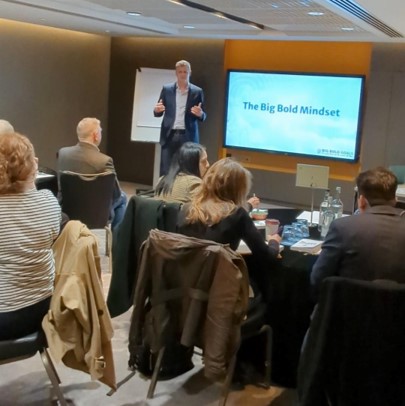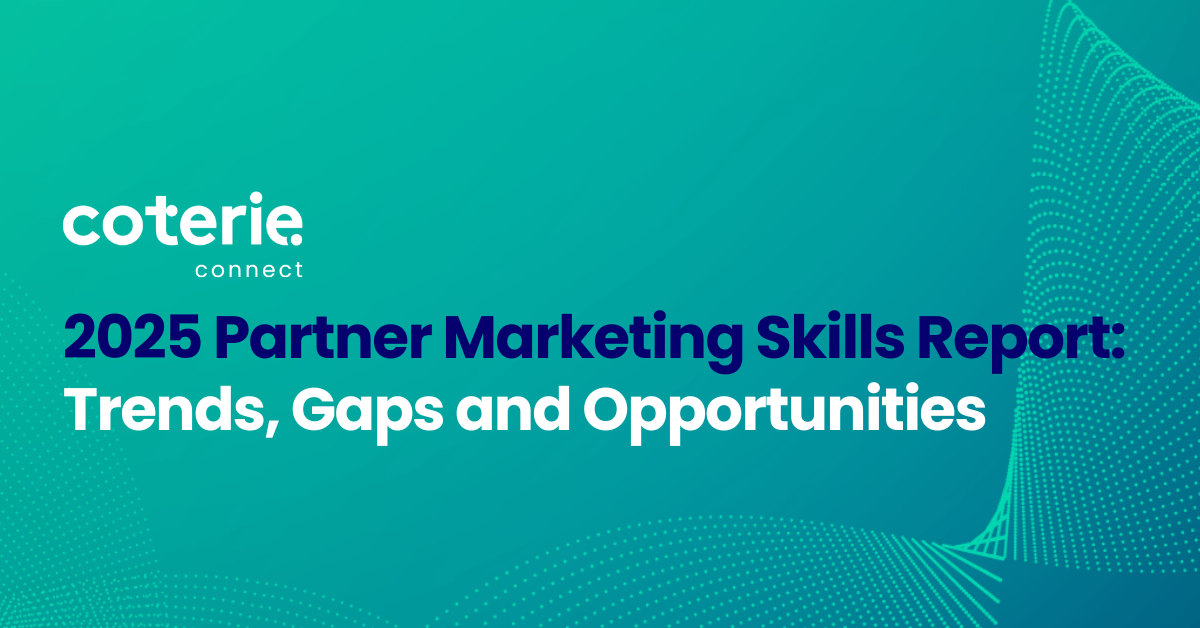Being bold partner marketers: The Big Bold Mindset
What does it mean to be a bold partner marketer? Why does it matter, and if we make the choice to be bolder, then how do we go about it?
Written by Caspar Craven, a leading authority on achieving big bold goals and one of Europe’s highest rated leadership conference speakers.
I’ve just had the pleasure of spending time speaking to, and with the Coterie Community – a community of Partner Marketers who have the fabulous big bold mission to put partner & ecosystem marketing on the map. This article is my reflections on what I’ve heard and a brief summary of some of the ideas shared on how to apply The Big Bold Mindset to partner marketing.
Why does being bold matter to Partner Marketing?

Speaking to the 30 senior leaders in the room from both marketing and sales in the partner marketing field, it’s clear that this is a sector that is underrepresented, and not seen as a distinct profession in its own right despite the fact that 76% of technology sales go through some form of channel, which is basically partner marketing. Across EMEA, one data set shows that for every eight field marketing people, there is only one partner marketing person.
This tallies with my own experience as CEO of a technology company a decade ago where we ended up working very closely with the partner marketing teams across leading companies like IBM and Microsoft. My first experience was that I knew nothing of this area and as we became more involved in, the cross discipline nature, the complex nature of managing multiple relationships and the skill of the teams, it became very apparent – Partner marketing is an important area and deserves to have light shone on it and to become a championed sector.
Big Bold Ideas
What are a few of the ideas I had to share with Coterie Community that can help with being bolder as partner marketers.
You can’t navigate a new world with an old chart.
I can’t think of a single sector that isn’t facing disruption and that requires us to develop a different set of mental models, of frameworks for how we look at the world and how we approach developing the skills needed at work. Put simply, we need a new set of charts.
Professor Kamal Munir at Cambridge University talks of need to imagine a world 5 years from now and to see the players, the ecosystem, the trends and patterns that have changed and to then work out what part we want to play in that world.
My mentor used to say to me that if you plan to be in the business that you are in today in five years’ time, then you won’t be in business. Different words but same result – how can you positively disrupt yourself.
In my talk, I shared the way that I first positively disrupted my world at home (with our plans to sail the world as a family) and as I developed that skill set at home, I then used the same approach to positively disrupt our business to find new and better ways of doing things. In the past seven years, I’ve added to this set of insights with my research and I now use these insights to help market leading companies globally to positively disrupt themselves and to think bigger and bolder.
There are some defining characteristics that I observe from the many leaders I have worked with, spoken to and studied. These are the characteristics that make up the Big Bold Mindset which I want to set out and explore here.





